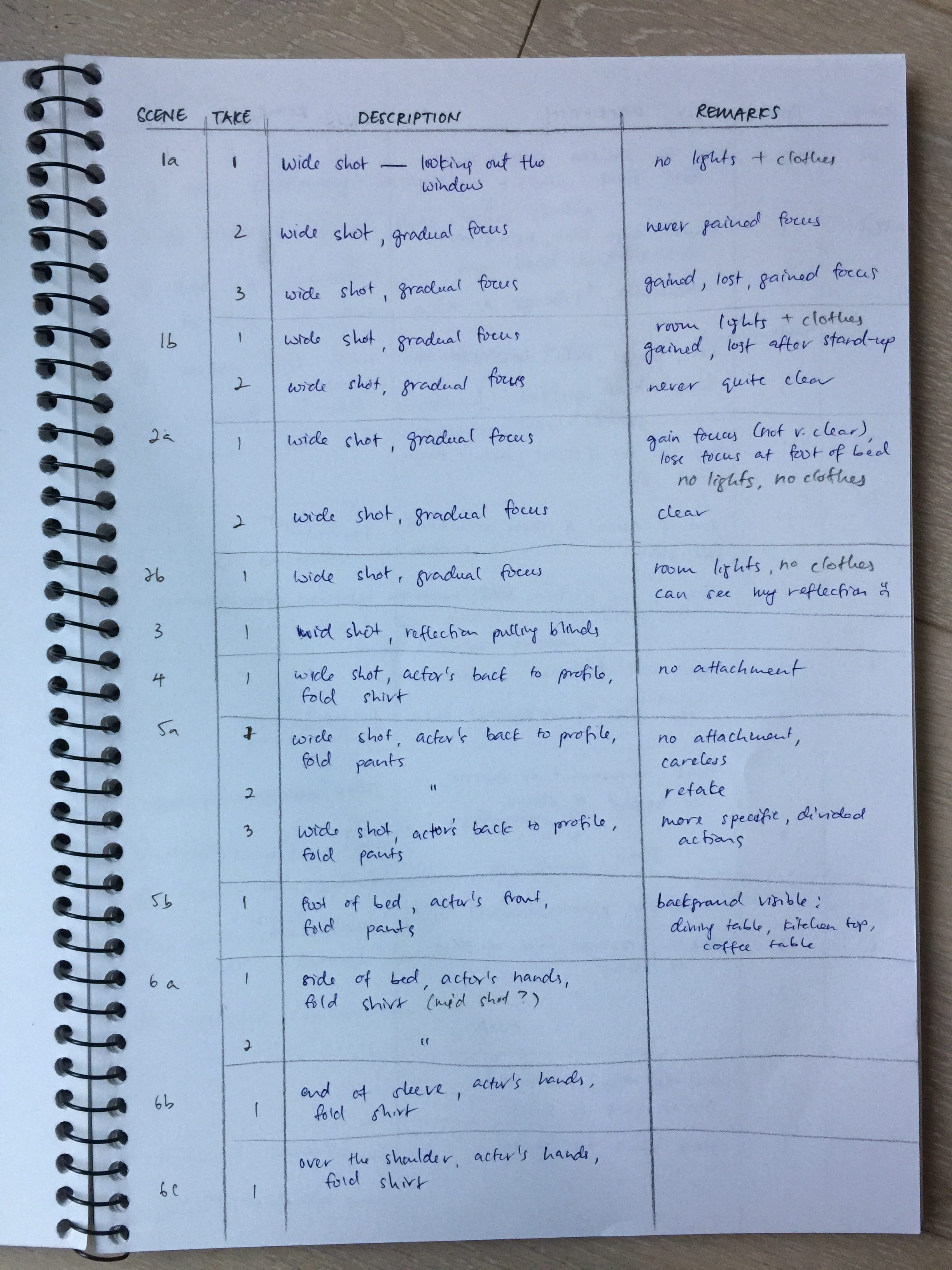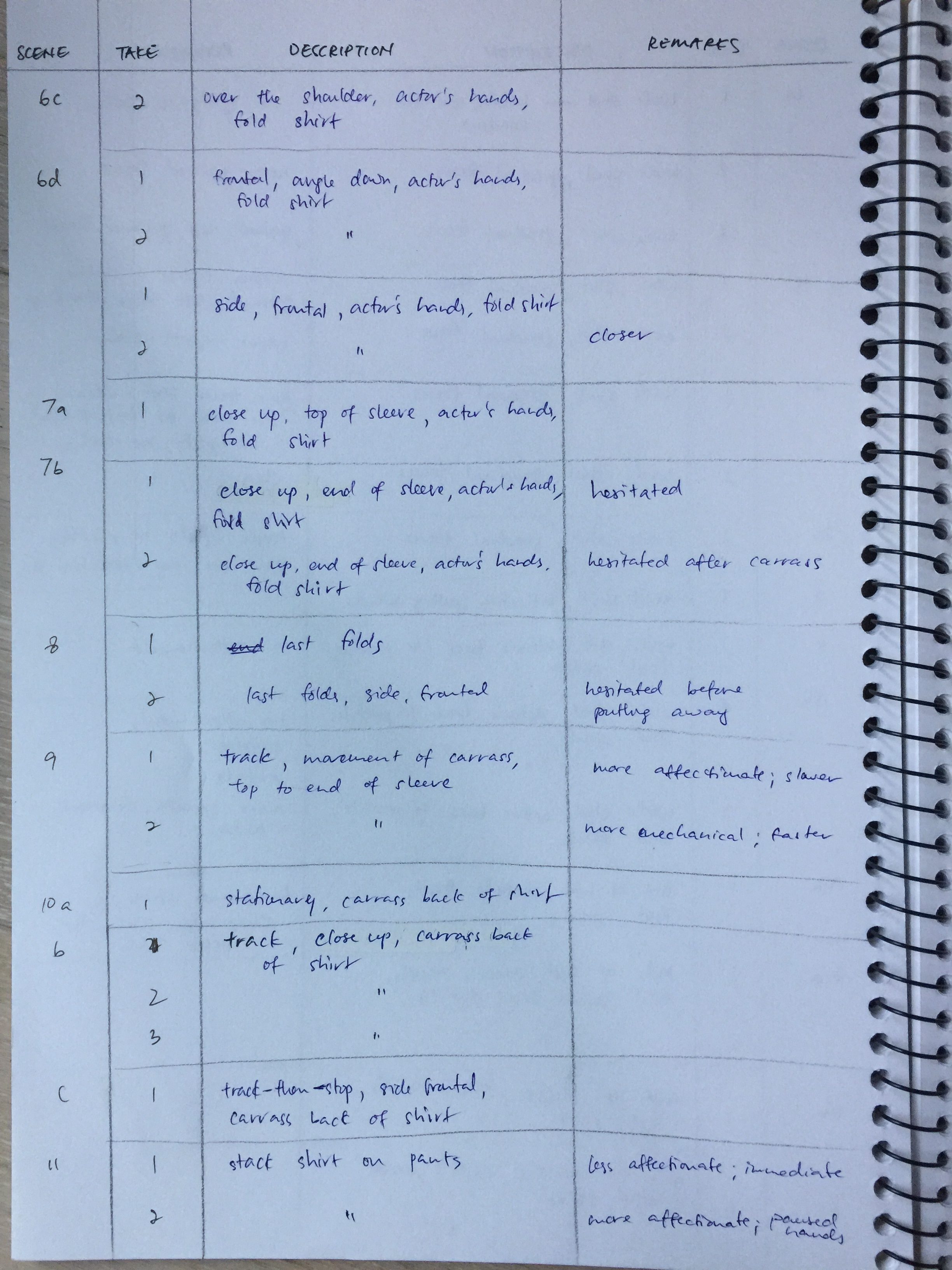By the end of my first consultation with Paul, I had been given the green light to explore camera movement. He advised being aware of the wall and incorporating colours/textures (which I did not take into account seriously in this first round). Feeling rather disoriented still, I decided to stop moping and take the first leap.
Scroll down for some shots and link to next related post
PROCESS & CHALLENGES
I managed to shoot something! Congratulations! (Still fumbling in the dark though) My housemate was kind enough to be subjected to the lens again. Unfortunately, Her bed and duvet rejected. So change of plans: we will fold clothes instead of making the bed. Without purchasing anything, I wanted to see how my limited resources would work.
SET
The minimalist set turned out looking clinical, in part due to the light blue bed sheet and props available. There were also restrictions: glass wall/window reflected the camera, position of lights easily cast my shadow, squeezy walking space and my short height. Mmm, stop whining.
On the bright side, there was the opportunity to film her reflection drawing the blinds. First time playing with reflections. Well, not exactly playing. I chose a pretty straight forward shot. I wonder now, how else can it be shot?
COMMUNICATION
It was the first time Katherine played a character not herself. It was the first time I directed an adult for camera. So different tactics were used to guide at various points: 1) giving character backstory 2) staging and rehearsing specific movements like a timed dance, including “affectionate pauses” and “mechanical, habitual movements” 3) telling her to hum a tune she knows personally which is related to character motivation 4) to imagine a string pulling sternum towards ceiling, and a soft push on both lower back and abdomen.
I realised that to communicate clearly, there are some things better left unsaid. Instead of explaining all three characters in my head, I should have focused on one at a time. By the end of the shooting session, we only shot it one way so the difference between characters did not even matter. While I may be confused about the bigger picture, the actor needs to know what is wanted specifically from him/her at each present moment.
CAMERA
I was not familiar enough with the functions of my camera. The exposure kept changing whenever the actor moved in or out of frame within a scene. Setting to manual did not help. Where is my manual guide?!
It was challenging to judge the degree of focus due to my poor ability to wink and the small digital screen. crashzoom-focus-zoomout, check! Yeah better remember.
Here are a few of the shots:
Gaining focus (above) and losing focus (below)
Reflection (below)
Exploring various ways to create intimacy (all below)
Well, at least now I am aware of some challenges. Here are what can be done next time:
- Do plan and list type of shots before shooting. Be more organised that way.
- Do not have 3 characters simultaneously appearing in my head.
Commit to one at a time and explain to actor clearly. - Consider what is necessary or unnecessary information.
- Research other ways to communicate with actor. Have multiple tactics in arsenal.
- Know camera before shooting.
So what’s next to explore? What can be added or taken away?
Stay tuned for new inspirations and motivations.

